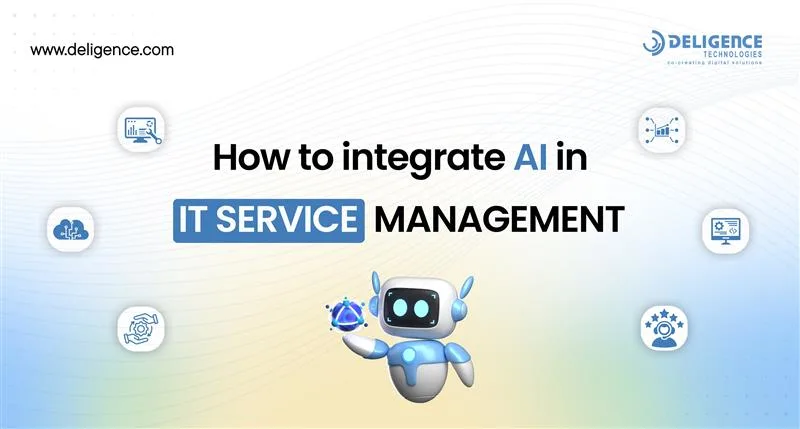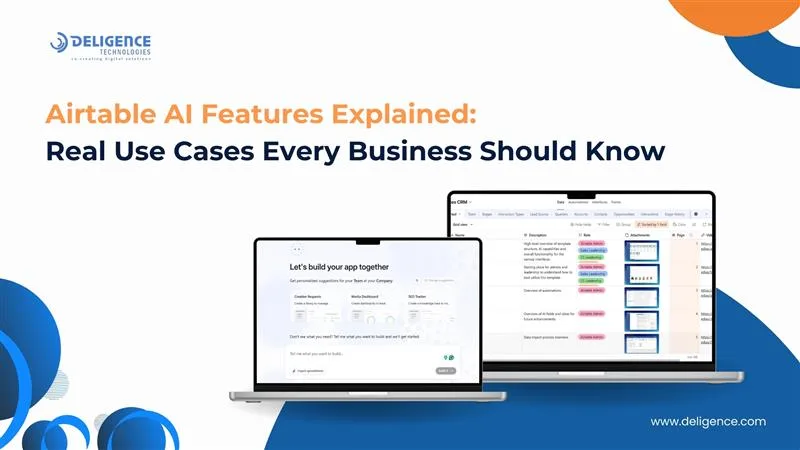What Is the Main Goal of Generative AI?
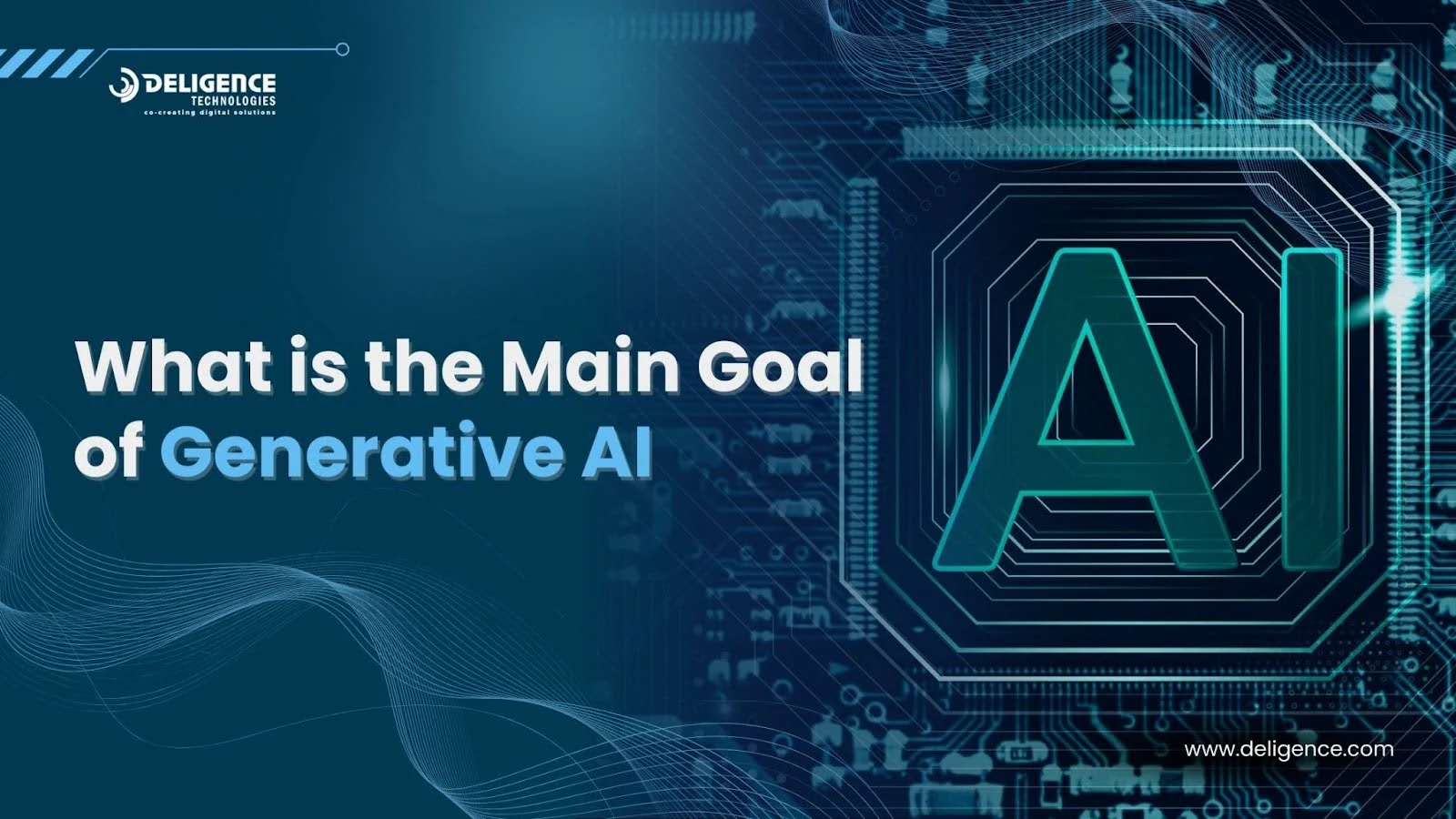
Generative AI is one of the most talked-about technologies today. But what does it really mean? And more importantly, what is the main goal of generative AI?
If you run a business or work with digital tools, you've likely heard of it. From chatbots to image creators, generative AI is popping up everywhere. It's not just a tech trend — it's a tool that can help businesses grow faster, save money, and be more creative.
In this blog, we'll break it down in simple language. You'll learn what generative AI is, why it matters, and how it can help your business today — and in the future.
Summary
- Generative AI is a type of AI that can create new things like text, images, music, and videos.
- It learns from data and uses patterns to make original content — like writing a blog or drawing a picture.
- The main goal is to help people work faster, save money, and be more creative.
- It's already used in marketing, design, education, and customer service.
- Generative AI is different from traditional AI — it creates, while traditional AI only predicts.
- With tools like ChatGPT and DALL·E, anyone can turn ideas into real content quickly.
- Companies like Deligence Technologies help businesses use generative AI for automation and growth.
Table of Contents
- What Is Generative AI in Simple Terms?
• Easy Examples of Generative AI - What Is the Main Goal of Generative AI?
• Real-world examples of how it helps - How Generative AI Works
- Why Is Generative AI Important Today?
• Problems Generative AI Helps to Fix
• Where Generative AI Is Used in Real Life - What Are the Benefits of Generative AI?
• How it saves time and money
• How it helps people create designs, text, and more - How Is Generative AI Different from Other AI Types?
• Key Differences for Business Leaders to Know - What Is the Future of Generative AI?
• How it may change creative jobs
• What we might see in the next 5–10 years - How Deligence Technologies Helps Businesses with AI Automation Services
- Conclusion
What Is Generative AI in Simple Terms?
Generative AI is a kind of artificial intelligence (AI) that can create brand-new things, like writing a story, drawing a picture, making music, or even building a video game scene. The word "generative" comes from the word "generate".
So, instead of just giving answers or doing math problems like a regular computer program, generative AI can actually create something new, kind of like how an artist, writer, or musician creates their work.
Imagine telling a computer:
"Write a funny story about a talking sandwich."
With generative AI, the computer can actually write that story!
Easy Examples of Generative AI
- ChatGPT: Helps write emails, blogs, and messages.
- DALL·E or Adobe Firefly: Creates images based on words you type.
- MusicLM: Makes music from text prompts.
- Runway: Edits videos using natural language.
These tools use generative AI to create — not just to answer questions.
What Is the Main Goal of Generative AI?
So, what is the main goals of generative AI? The main purpose is to create new content—like text, images, audio, or even video—by learning from existing examples.
Generative AI is a special branch of artificial intelligence. Here's a simple way to understand how it fits in:
AI > Machine Learning (ML) > Deep Learning (DL) > Generative AI
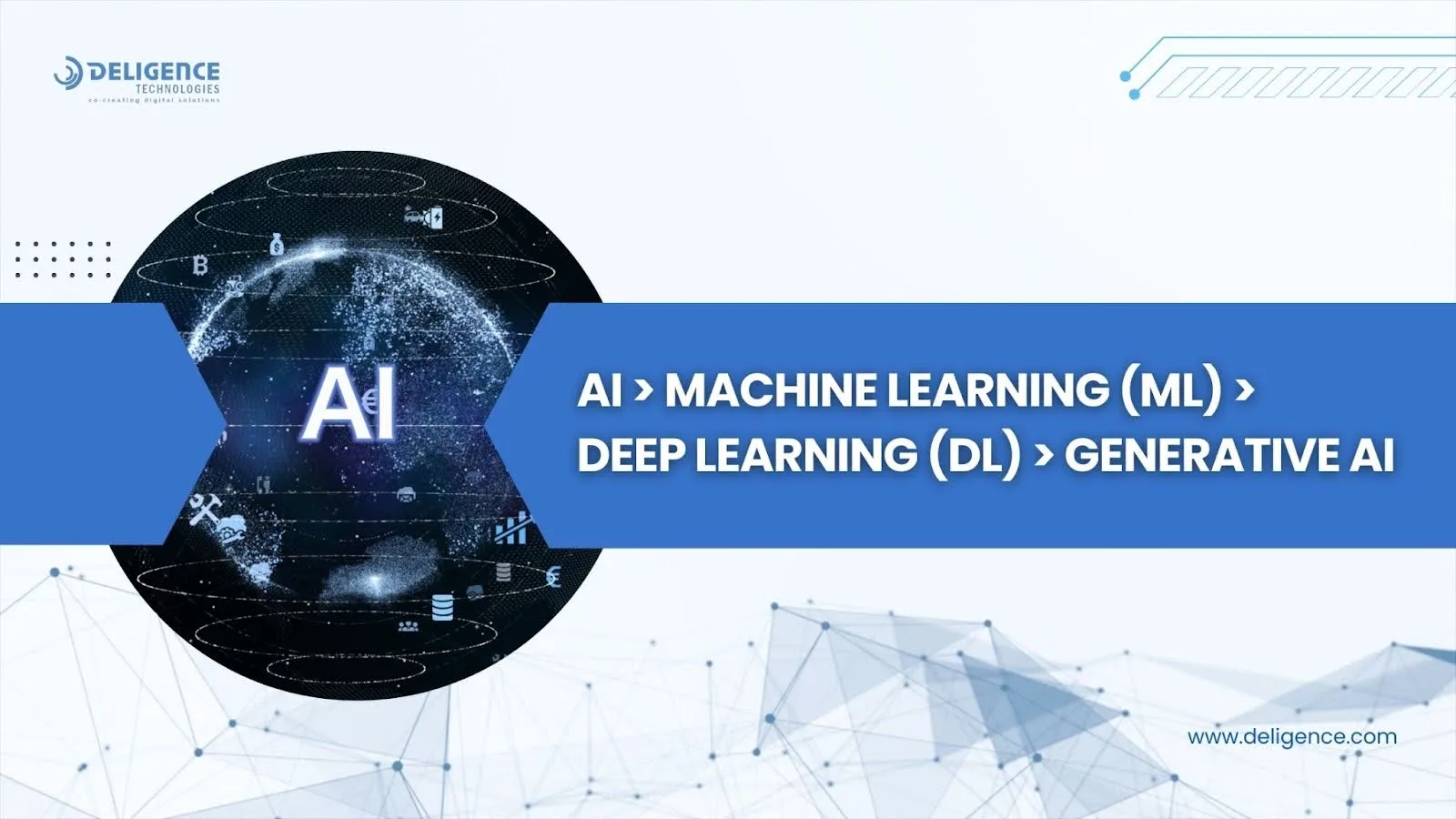
This means generative AI is powered by deep learning, which is a more advanced part of machine learning, all under the umbrella of AI.
The goal of generative AI is to study patterns in huge sets of data and then use those patterns to make original things. For example:
- Text – ChatGPT can write stories, emails, or articles just from a short prompt.
- Images – DALL-E can draw pictures based on simple text descriptions.
- Audio – Voice cloning tools can recreate someone's voice.
- Video – AI can even produce short videos from basic instructions.
Real-World Examples
Generative AI is already helping people and businesses in big ways:
- Political campaigns use it to create messages and visual ads.
- Marketers use it to write catchy content and design images.
- Media companies use it to produce articles, headlines, and visuals.
In short, the main goal of generative AI is to make creativity faster, smarter, and easier, while still keeping it human-like and high-quality.
How Generative AI Works
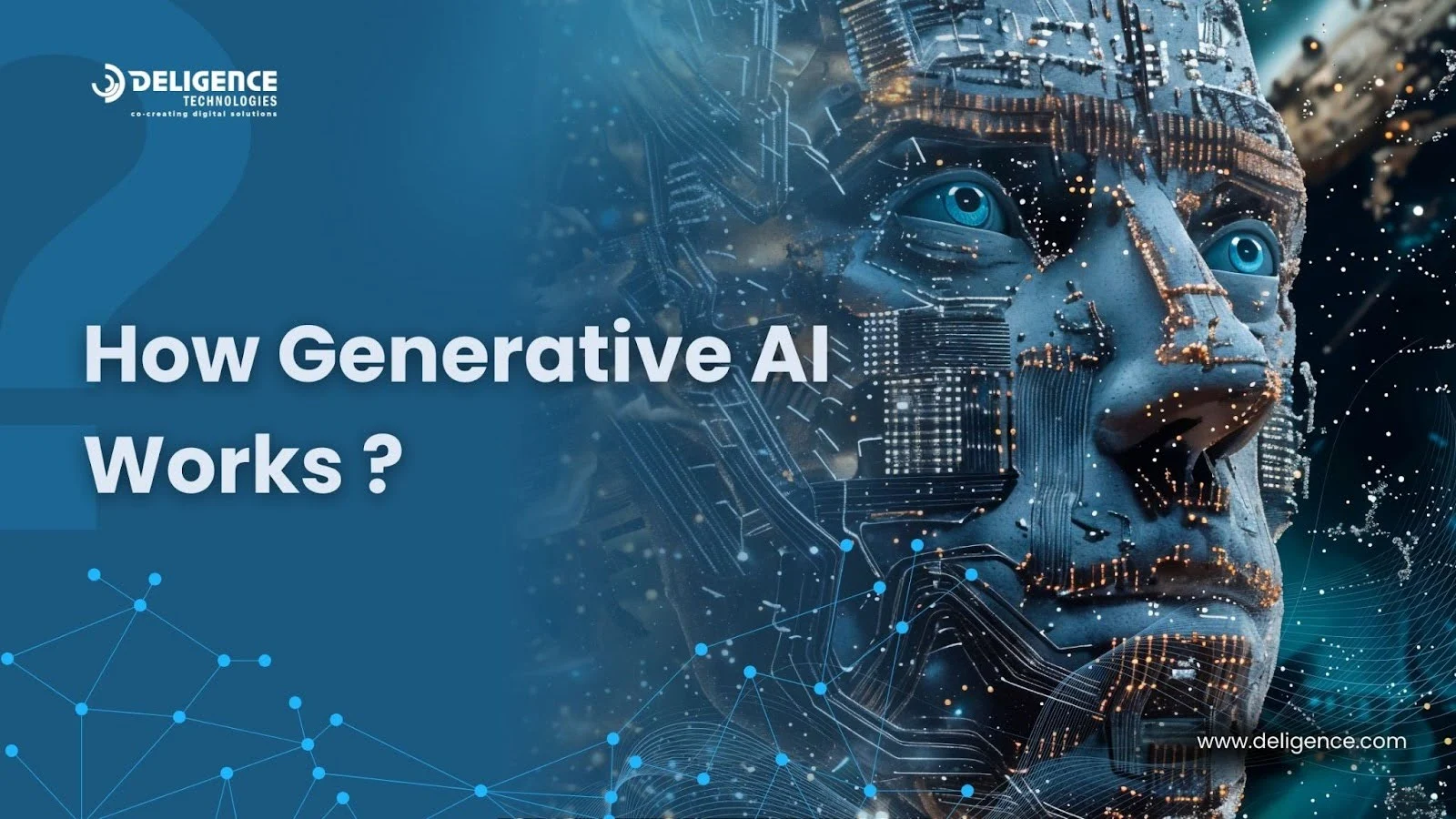
Comparison graphic explaining what makes generative AI different from predictive AI.
Generative AI might sound complex, but it's simple at its core. It learns from large amounts of data—like text, images, and audio—finds patterns, and uses them to create something new that looks or sounds real.
It works through neural networks, which mimic how the human brain processes information. These networks spot trends in data and use them to generate content.
Generative AI often uses unsupervised or semi-supervised learning, meaning it can learn without needing every piece of data to be labeled. This makes it easier to build powerful systems, known as foundation models.
Popular examples include:
- GPT-3 – used in tools like ChatGPT to write and respond to text.
- Stable Diffusion – generates realistic images from simple text prompts.
These tools help turn ideas into content quickly and easily.
Why Is Generative AI Important Today?
One reason this matters so much is because it helps people get things done quickly. For example, if you need to write a report or plan a project, this technology can help by giving you a solid starting point. Instead of spending hours thinking about where to begin, you can use the tool to move forward with confidence and finish your work sooner.
It's also helpful in jobs where people need to write, design, or communicate often. Teachers use it to create lessons, marketers use it to draft emails and ads, and small businesses use it to answer customer questions or build content for their websites. Tools like ChatGPT or Canva Magic Studio make these tasks easier for everyone, even if they don't have special training.
This type of AI is also making a big difference for creativity. Artists and writers use it to explore new styles and ideas. You can type in a few words, and it will turn them into an image or paragraph to help you get inspired. It's not replacing human creativity—it's helping it grow.
Problems Generative AI Helps to Fix
Many people and businesses struggle with tasks that take a lot of time, like writing content, answering repeated questions, or coming up with new ideas. Generative AI helps solve these problems by quickly creating drafts for emails, reports, ads, or social posts. It also helps overcome creative blocks by offering suggestions or examples.
For small teams or businesses, it reduces the need for extra staff by saving time and lowering content costs. In customer service, it improves response speed and quality, making work smoother and more efficient.
Where Generative AI Is Used in Real Life
This technology is being used in many areas today. In marketing, it helps create ads and social media content. In schools, it supports students and teachers with writing help and lesson planning. Designers use it to turn ideas into visuals quickly, even without design training.
Businesses use AI to improve customer service and write faster replies. It's also used in healthcare for note-taking and in entertainment to help write scripts or suggest edits. These tools are already part of everyday work across many industries.
What Are the Benefits of Generative AI?
Still wondering, what is the main goals of generative AI? One big goal is to make our lives easier and businesses more efficient. Let's look at some top benefits.
How It Saves Time and Money
- Tasks that took hours can now take minutes.
- No need to hire large creative teams for simple content.
- Quick changes and updates without starting from scratch.
How It Helps People Create Designs, Text, and More
- Need a flyer? Generative AI can design one.
- Want to write a blog? It can give you a draft.
- Making a video? It can help script and edit it.
You still guide the AI, but it does most of the heavy lifting.
Not all AI is the same. Let's see how generative AI is different.
How Is Generative AI Different from Other AI Types?
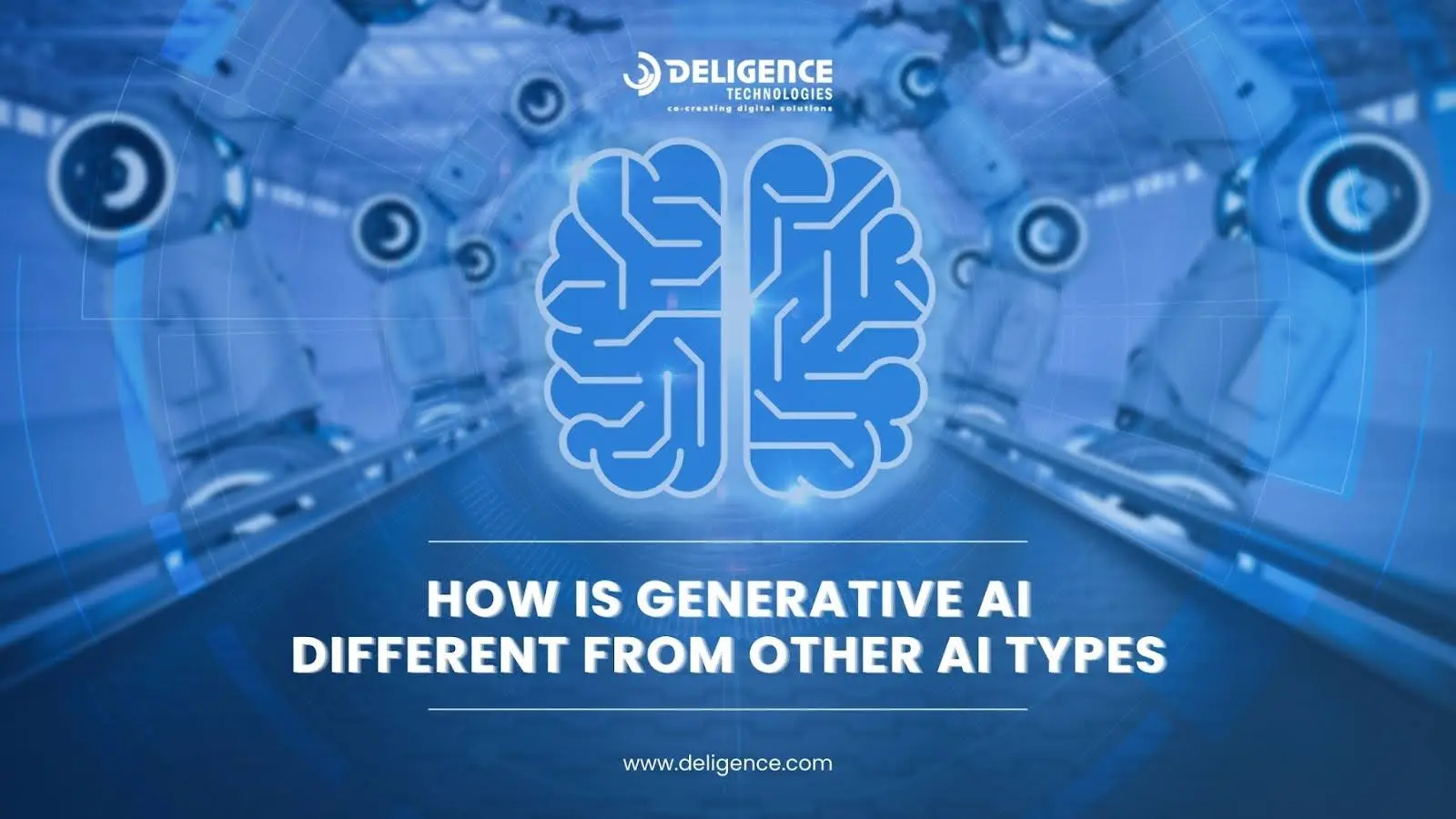
As businesses adopt artificial intelligence (AI) to increase efficiency and productivity, it's important to understand the difference between traditional AI and generative AI. While both use machine learning, their goals and business applications are very different.
Key Differences for Business Leaders to Know
| Feature | Traditional AI | Generative AI |
| Goal | Analyze, predict, automate tasks | Create new content and ideas |
| Output | Recommendations, answers, analytics | Original text, images, videos, and more |
| Technology Used | Narrow machine learning models | Large foundation models with transformers |
| Example Tools | Siri, Amazon's recommendations, CRMs | ChatGPT, Jasper, Adobe Firefly |
| Use Cases | Forecasting, customer service, fraud detection | Content creation, marketing, design |
What Is the Future of Generative AI?
Generative AI is just getting started. So, what is the main goals of generative AI as we move forward? Let's look at what the future might bring.
How It May Change Creative Jobs
- Writers may use AI for first drafts or ideas.
- Designers might use AI to generate design options.
- Video editors can save time with AI-powered editing tools.
Instead of replacing jobs, AI will assist and speed up the creative process.
What We Might See in the Next 5–10 Years
- AI that understands feelings and tone better.
- More personalized content for every user.
- Better tools for small businesses to compete with big brands.
Generative AI will likely become part of almost every business — helping teams become faster, smarter, and more creative.
How Deligence Technologies Helps Businesses with AI Automation Services
At Deligence Technologies, we help businesses unlock the full power of generative AI and automation. Whether you're a small startup or a growing enterprise, our AI automation services are designed to make your work easier and more efficient.
What We Offer:
- Custom AI agents to handle customer support, content writing, and follow-ups.
- Generative AI tools to help with marketing, design, and product descriptions.
- Smart automation that saves time and reduces errors.
We don't just build AI — we create solutions that match your business goals.
Whether you need help automating your emails, managing leads, or creating content, Deligence Technologies is here to guide you every step of the way.
Conclusion
So, what is the main goal of generative AI? It's all about helping humans do more, faster, with less effort and more creativity. It's about creating smart tools that can write, design, and help us work better.
Generative AI is changing the way businesses work. From saving time and money to making amazing content in seconds, it's a powerful tool for the future.


